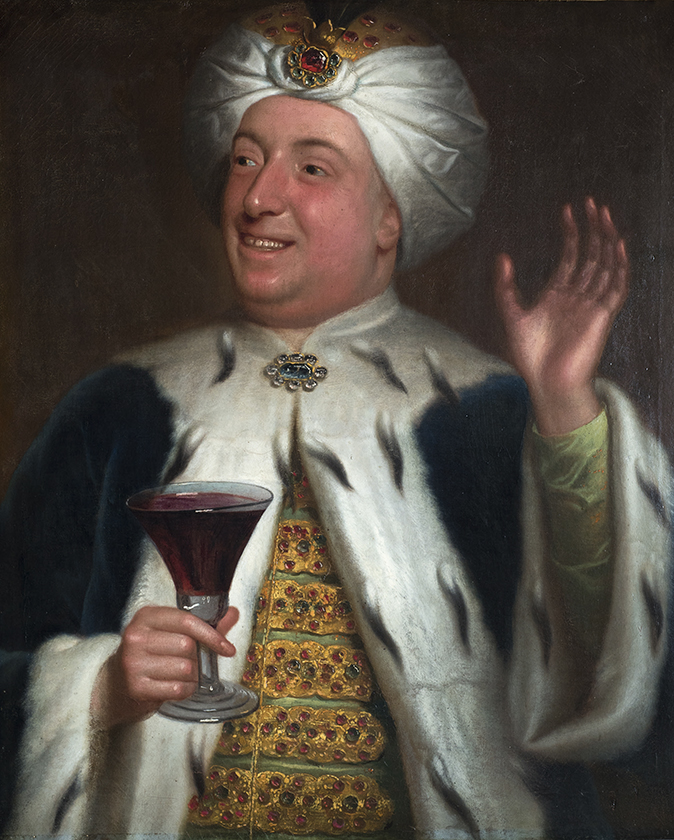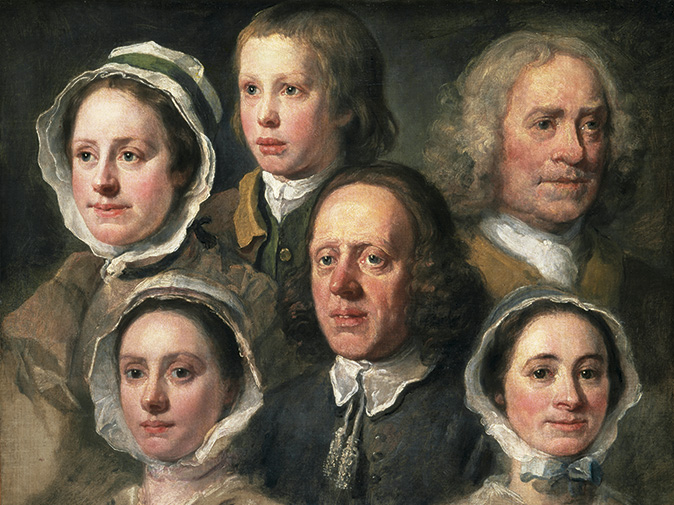My favourite painting: Edward Dashwood
'This portrait conjures up all his joie de vivre, love of dressing up and great hospitality'


Sir Francis Dashwood, 2nd Baronet (1708–81) by Adrien Carpentiers (1739–78), 29¼in by 24¼in, Collection Sir Edward Dashwood, 12th Baronet
Edward Dashwood says: Although more widely known as a prominent member of the Hellfire Club, my ancestor is depicted here as a member of the Divan Club, which he founded. To qualify, you needed to have visited Constantinople—considered pretty adventurous in those days—and then have had yourself painted in Ottoman dress. Inscribed on the reverse “El Faquir Dashwood Pasha” and set in a fabulous carved and gilded frame, this portrait conjures up all his joie de vivre, love of dressing up and great hospitality. I see it virtually every day and it never ceases to bring a smile to my face.
Sir Edward Dashwood runs West Wycombe Estate. He is chairman and owner of the group that includes E. J. Churchill gunmakers and the Churchill Shooting Ground
John McEwen comments on Sir Francis Dashwood, 2nd Baronet: In his 1974 history of the 18th-century phenomenon The Hell-Fire Clubs, Geoffrey Ashe drew a parallel with the 1960s hippie protest against convention, both traceable to Rabelais’s 16th-century Gargantua and the utopian Abbey of Thélème, its sole rule: ‘Do what thou wilt.’
Certainly, Sir Francis Dashwood, who didn’t found but symbolises the Hellfire Clubs, was at maverick and rakish odds with what he considered the smug, philistine and corrupt Whig establishment, but liberty, for him, meant more than ‘nymphs and hogsheads’ and blasphemous japes.
In a long parliamentary career, he was a famed orator, defended Admiral John Byng and supported American independence. His political career reached its apogee as Chancellor of the Exchequer in Lord Bute’s short-lived administration.
Dashwood inherited his country seat, West Wycombe, Buckinghamshire, his baronetcy and a fortune at 15. After Eton, he embarked on two Grand Tours, during which he flirted with Jacobitism and Catholicism, before travelling more adventurously. It was said he seduced the wife of Peter the Great, disguised as the Tsar’s arch-enemy Charles XII of Sweden, despite Charles’s death 15 years earlier.
Sign up for the Country Life Newsletter
Exquisite houses, the beauty of Nature, and how to get the most from your life, straight to your inbox.
The Divan Club, which Dashwood co-founded, met at the Thatched Tavern in St James’s Street, London SW1. Members wore turbans and robes and carried daggers; Dashwood’s title was El Faquir Dashwood Pasha and the standing toast was ‘the Harem’. Each member had to donate his painted portrait and the Flemish portraitist Adrien Carpentiers, active in England from 1739, obliged.
The Society of Dilettanti, which also was co-founded by Dashwood and still extant, is a similar club for enthusiasts of Greek and Roman art. Carpentiers painted Dashwood as ‘Pope Innocent’.

My favourite painting: Marco Forgione
'I fell completely in love with this painting because of its sheer joy, movement and carefree energy.'

My favourite painting: Jenny Uglow
'This is a tribute to the dignity and inner lives of “ordinary” people, profound and tender at once.'
Country Life is unlike any other magazine: the only glossy weekly on the newsstand and the only magazine that has been guest-edited by HRH The King not once, but twice. It is a celebration of modern rural life and all its diverse joys and pleasures — that was first published in Queen Victoria's Diamond Jubilee year. Our eclectic mixture of witty and informative content — from the most up-to-date property news and commentary and a coveted glimpse inside some of the UK's best houses and gardens, to gardening, the arts and interior design, written by experts in their field — still cannot be found in print or online, anywhere else.
-
 Some of the finest landscapes in the North of England with a 12-bedroom home attached
Some of the finest landscapes in the North of England with a 12-bedroom home attachedUpper House in Derbyshire shows why the Kinder landscape was worth fighting for.
By James Fisher
-
 The Great Gatsby, pugs and the Mitford sisters: Country Life Quiz of the Day, April 16, 2025
The Great Gatsby, pugs and the Mitford sisters: Country Life Quiz of the Day, April 16, 2025Wednesday's quiz tests your knowledge on literature, National Parks and weird body parts.
By Rosie Paterson
-
 'As a child I wanted to snuggle up with the dogs and be part of it': Alexia Robinson chooses her favourite painting
'As a child I wanted to snuggle up with the dogs and be part of it': Alexia Robinson chooses her favourite paintingAlexia Robinson, founder of Love British Food, chooses an Edwin Landseer classic.
By Charlotte Mullins
-
 The Pre-Raphaelite painter who swapped 'willowy, nubile women' for stained glass — and created some of the best examples in Britain
The Pre-Raphaelite painter who swapped 'willowy, nubile women' for stained glass — and created some of the best examples in BritainThe painter Edward Burne-Jones turned from paint to glass for much of his career. James Hughes, director of the Victorian Society, chooses a glass masterpiece by Burne-Jones as his favourite 'painting'.
By Charlotte Mullins
-
 'I can’t look away. I’m captivated': The painter who takes years over each portrait, with the only guarantee being that it won't look like the subject
'I can’t look away. I’m captivated': The painter who takes years over each portrait, with the only guarantee being that it won't look like the subjectFor Country Life's My Favourite Painting slot, the writer Emily Howes chooses a work by a daring and challenging artist: Frank Auerbach.
By Toby Keel
-
 My Favourite Painting: Rob Houchen
My Favourite Painting: Rob HouchenThe actor Rob Houchen chooses a bold and challenging Egon Schiele work.
By Charlotte Mullins
-
 My Favourite Painting: Jeremy Clarkson
My Favourite Painting: Jeremy Clarkson'That's why this is my favourite painting. Because it invites you to imagine'
By Charlotte Mullins
-
 The chair of the National Gallery names his favourite from among the 2,300 masterpieces — and it will come as a bit of a shock
The chair of the National Gallery names his favourite from among the 2,300 masterpieces — and it will come as a bit of a shockAs the National Gallery turns 200, the chair of its board of trustees, John Booth, chooses his favourite painting.
By Toby Keel
-
 'A wonderful reminder of what the countryside could and should be': The 200-year-old watercolour of a world fast disappearing
'A wonderful reminder of what the countryside could and should be': The 200-year-old watercolour of a world fast disappearingChristopher Price of the Rare Breed Survival Trust on the bucolic beauty of The Magic Apple Tree by Samuel Palmer, which he nominates as his favourite painting.
By Charlotte Mullins
-
 My favourite painting: Andrew Graham-Dixon
My favourite painting: Andrew Graham-Dixon'Lesson Number One: it’s the pictures that baffle and tantalise you that stay in the mind forever .'
By Country Life